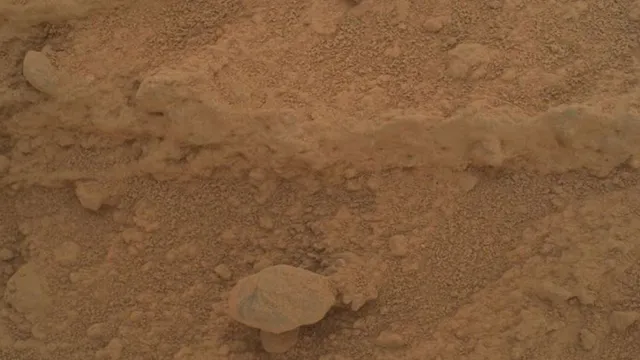- By Supratik Das
- Fri, 20 Jun 2025 12:06 PM (IST)
- Source:JND
A NASA Curiosity rover photo from Mars sparked a buzz on social media, after a decade since it was originally snapped. The picture, which was taken on September 19, 2013, recently went viral after a UFO spotter claimed to have seen a "mushroom" on the surface of Mars, fueling theories about life on the Red Planet. The claim comes from Scott Waring, a self-proclaimed UFO hunter and blogger, who said he had seen the object while surfing through NASA's publicly released rover images. He pointed to a structure that he feels closely resembles a mushroom, with a rounded, pockmarked top and a curved stem, features characteristic of fungi on Earth.
The photograph in question was snapped by the Mars Hand Lens Imager (MAHLI), which is on the Curiosity rover's robotic arm. The device is intended to take high-resolution, close-up photos of rocks, soil, and Martian surface features. Waring stated that NASA "should have poked it, bumped it, knocked it over, cut it open," or even employed the onboard laser on the rover to check out the object more carefully. He could not believe that NASA could have missed something that could suggest Martian life, considering its assignment to probe the planet's habitability.
On the other hand, Dr Gareth Dorrian, a planetary physicist at Birmingham University, said the object is probably not a mushroom or any type of biological life. In an interview with Daily Mail, he added that the formation looks to be a flat, disc-shaped stone, probably a product of natural geological and wind erosion processes. "These are probably two rocks, one is sitting on top of the other, exposed as Martian dust and sand wore away over time," Dr Dorrian said, noting that it's a typical occurrence in desert environments.
Life on Mars: Where Does Science Stand
While this latest claim has captured the imagination of the internet, the larger question of life on Mars is still open. The National Aeronautics and Space Administration's Curiosity rover, which has been roving around the Gale Crater since 2012, has made some major findings. These include the finding of organic molecules, the fundamental components of life, in ancient Martian rocks, and evidence of methane in the planet's very thin atmosphere. While each of these discoveries is interesting, they are not proof of life. Researchers continue to examine these components to see if they are biological in nature or the result of geological processes.
ALSO READ: Is Earth Safe Now? Asteroid 2024 YR4 Changed Its Path, Raises New Alarm: Here's What NASA Revealed
NASA, as well as other space agencies globally, continues to work towards unraveling the mystery of Martian life. The Perseverance rover that touched down on Mars in 2021 is also designed to look for evidence of ancient microbial life and gather samples for a possible future return to Earth

